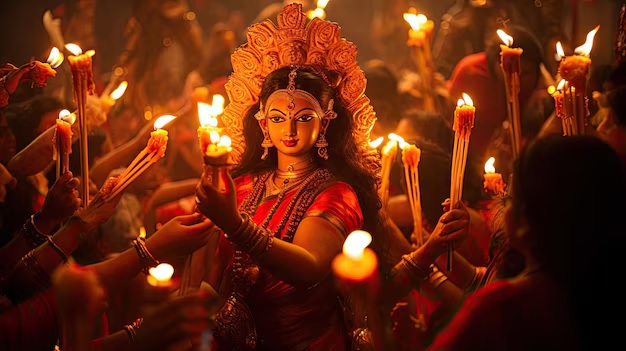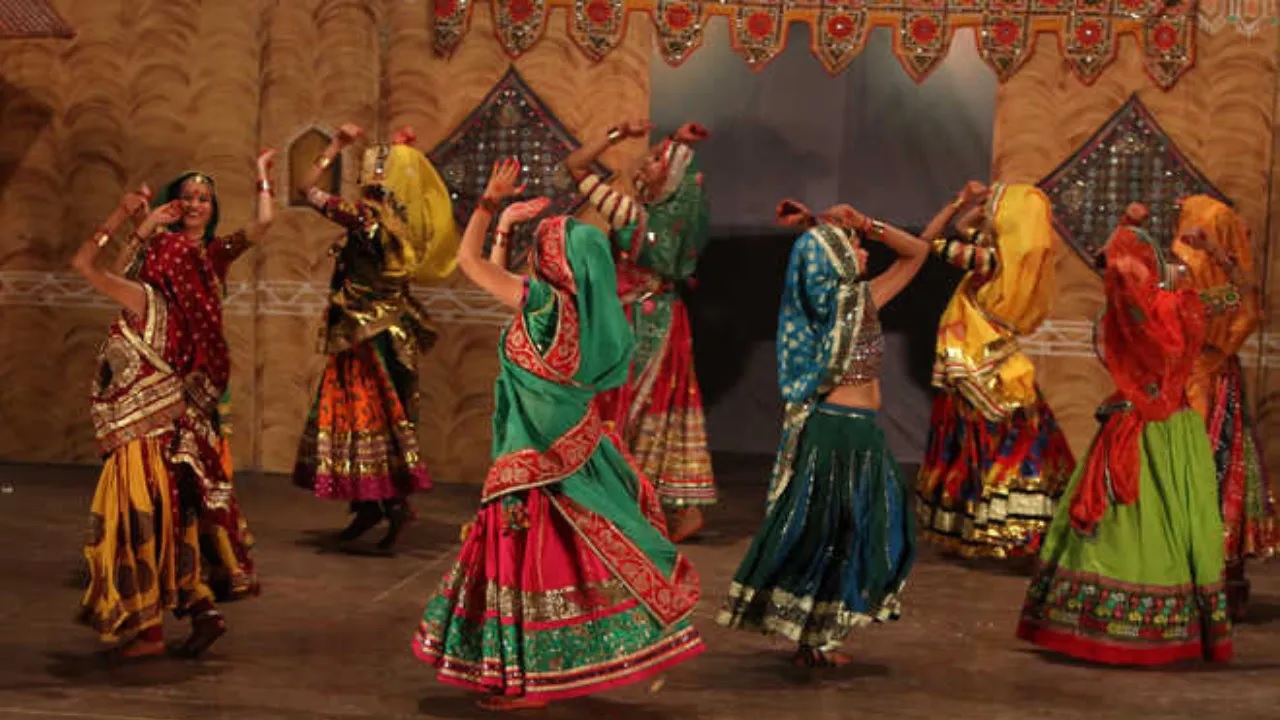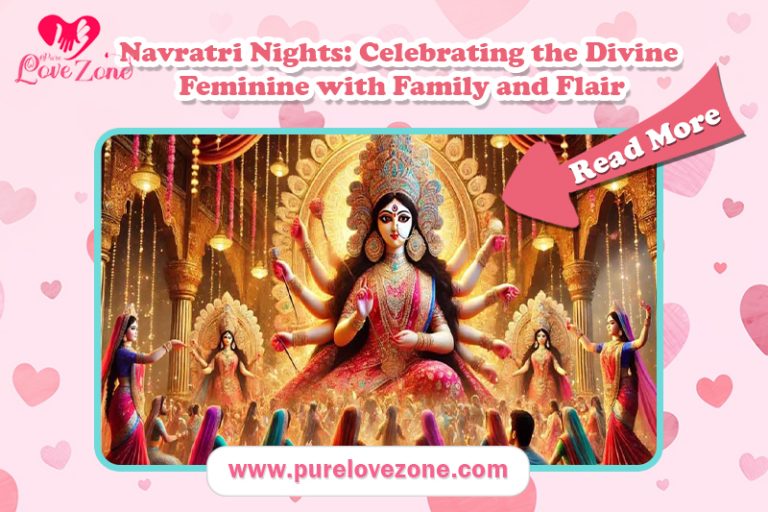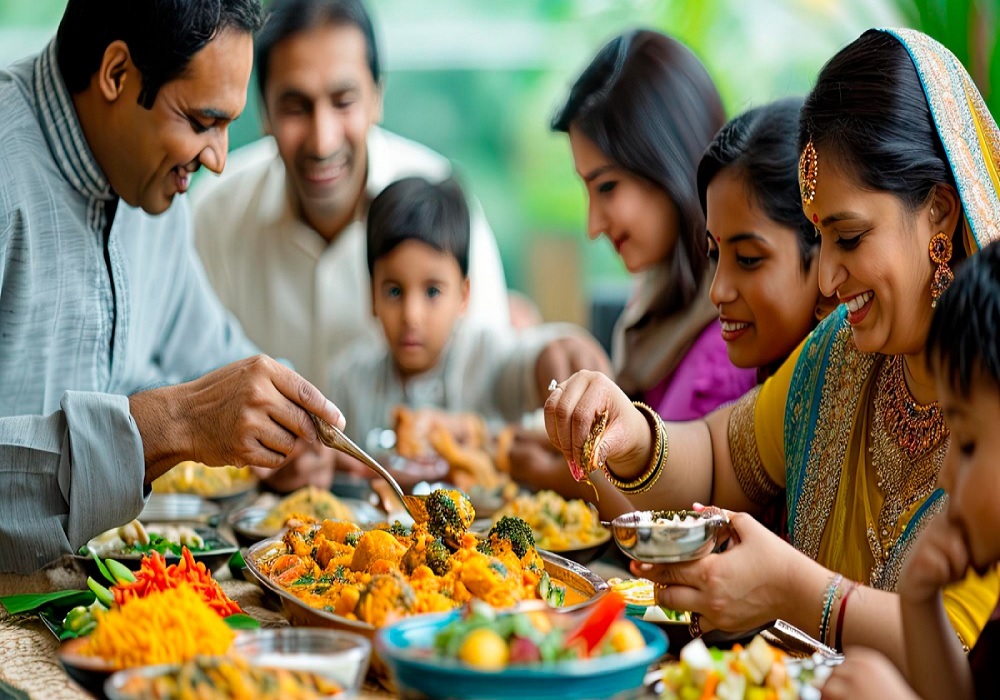Navratri, one of the most widely celebrated festivals in India, is a nine-night festival dedicated to the worship of the divine feminine, represented by Goddess Durga. These nine nights are filled with vibrant celebrations, where families come together to honor the goddess, participate in traditional rituals, and enjoy a sense of unity and festivity. Navratri, which literally means “nine nights,” is a time to reflect on the triumph of good over evil, but it is also an opportunity to celebrate the enduring strength, compassion, and grace of the feminine energy that sustains the world.

While Navratri is observed differently across various regions of India, the essence of the festival remains the same: it is a joyful and spiritual time for families to connect, bond, and express their devotion. The festival is not only about prayer and rituals but also about dressing up in colorful attire, dancing to the rhythm of traditional music, and sharing in the joy of community celebrations. From the devotional songs to the exuberant Garba and Dandiya dances, Navratri nights are a perfect blend of spirituality, family bonding, and cultural vibrance.
The Significance of Navratri and the Divine Feminine
Navratri is a celebration of Goddess Durga in her various forms, symbolizing different aspects of the divine feminine. Each day of the festival is dedicated to one of the goddess’s avatars, each representing a different facet of life, such as strength, wisdom, prosperity, courage, and compassion. These nine days also commemorate the victory of Goddess Durga over the demon Mahishasura, symbolizing the eternal triumph of good over evil.
For families, Navratri is a reminder of the nurturing and powerful energy of women and their crucial role in society. The goddess is worshipped in various forms, including Durga, Lakshmi, and Saraswati, representing power, wealth, and knowledge, respectively. This focus on the divine feminine provides an opportunity to honor the women in the family—mothers, daughters, sisters, and wives—who embody these values in everyday life. As families come together to worship, they also acknowledge the strength and significance of the feminine force that sustains the household and the world at large.

Family Bonding During Navratri
Navratri is an occasion that brings families closer, as they participate in rituals, prepare special meals, and engage in collective celebrations. In many households, the preparation for the festival begins well in advance, with family members cleaning and decorating the home, setting up altars, and making arrangements for daily prayers and offerings. This process is often a group effort, with each family member contributing in their own way, whether it’s helping with decorations, cooking festive foods, or preparing traditional garments for the celebrations.
For children, Navratri is a time of excitement and learning. They are taught the significance of the goddess, the meaning behind each of the nine days, and the importance of values like courage, kindness, and resilience. Participating in the rituals and celebrations not only strengthens their cultural and spiritual roots but also helps foster a sense of family unity. As they grow, these memories of celebrating Navratri with their family become cherished moments that shape their understanding of tradition and togetherness.
The Role of Rituals in Navratri Celebrations
Each day of Navratri holds a special significance, marked by prayers, fasting, and various rituals that are performed in the home or at local temples. Many families begin the day by offering prayers to the goddess, lighting a lamp (diya), and chanting hymns and mantras that praise the divine feminine. These daily rituals help set a peaceful and spiritual tone for the day, encouraging reflection, gratitude, and devotion.
In some regions, a Kalash (sacred vessel) is placed on an altar, symbolizing the goddess, and it is worshipped throughout the nine days with offerings of flowers, fruits, and sweets. The practice of fasting is also common during Navratri, with many families observing a fast in honor of the goddess, consuming only certain foods like fruits, milk, and grains.
Navratri is also a time for community prayers, where families gather at temples or in public spaces to participate in collective worship. The chanting of hymns and the rhythmic beats of the dhol (drum) and other musical instruments create an atmosphere of spiritual upliftment, allowing families to connect with the divine and each other in a profound way.
The Joy of Garba and Dandiya: Dance as Devotion
One of the most iconic aspects of Navratri celebrations is the Garba and Dandiya Raas, traditional folk dances that are performed in honor of the goddess. These dances, originating from the state of Gujarat, have become synonymous with Navratri and are enjoyed by people of all ages and regions. Garba is usually performed in a circular pattern around an image or symbol of Goddess Durga, symbolizing the cyclical nature of life and the universe. Dandiya Raas involves the use of colorful sticks (dandiyas) and is performed in pairs, with participants striking the sticks together in rhythm to the music.

For many families, participating in Garba and Dandiya is the highlight of the Navratri nights. Dressed in traditional attire—women in vibrant chaniya cholis (long skirts and blouses) and men in kediyu (traditional shirts) and dhotis—families come together to dance, sing, and celebrate under the night sky. The vibrant colors, the energetic music, and the synchronized movements of the dancers create an electric atmosphere that is filled with joy and excitement.
These dance events are more than just a form of entertainment—they are a way of expressing devotion to the goddess. The rhythmic movements of the dance are believed to represent the cosmic dance of creation and destruction, symbolizing the balance between life and death, light and darkness. For families, these dance nights offer a unique opportunity to bond, let loose, and enjoy the festive spirit together.
Cultural Diversity and Regional Variations
While Garba and Dandiya are most commonly associated with Navratri celebrations in Gujarat, the festival is celebrated in various forms across India, each with its own unique customs and traditions. In West Bengal, for instance, Navratri coincides with Durga Puja, a grand celebration that involves elaborately crafted idols of Goddess Durga, processions, and cultural performances. In the southern states, Navratri is marked by the tradition of “Golu,” where families set up elaborate displays of dolls that represent scenes from mythology, life, and the divine.
In Maharashtra, families observe the festival with fasting, prayers, and performing a special puja for the goddess on the eighth day (Ashtami) and ninth day (Navami), followed by a feast. In North India, particularly in states like Uttar Pradesh and Bihar, Ramleela—dramatic enactments of scenes from the Ramayana—are performed, culminating in Dussehra, the day that marks the victory of Lord Rama over Ravana.
This diversity of traditions adds to the richness of Navratri, allowing families from different regions to celebrate the festival in a way that resonates with their cultural heritage. Regardless of the regional differences, however, the core values of devotion, family unity, and the celebration of the divine feminine remain central to Navratri celebrations everywhere.
Dressing Up: The Flair of Navratri
No Navratri celebration is complete without the vibrant and colorful attire that participants don during the festival. Traditional clothing plays an essential role in Navratri, with each day often associated with a specific color that holds symbolic meaning. Families take pride in wearing their finest traditional outfits, which are often adorned with intricate embroidery, mirror work, and bright patterns.

Women typically wear chaniya cholis or sarees, while men don kediyu and dhotis or kurta-pajamas. These outfits not only enhance the festive mood but also reflect the cultural heritage and artistic craftsmanship of different regions. Dressing up for Navratri becomes an integral part of the celebration, allowing families to express their creativity, individuality, and connection to tradition.
Conclusion
Navratri is much more than a religious festival—it is a celebration of life, family, and the divine feminine. Through nine nights of devotion, dance, and joy, families come together to honor the goddess and the values she represents. Whether through rituals, fasting, Garba, or simply sharing festive meals, Navratri offers an opportunity for families to bond, reflect, and celebrate their cultural heritage with flair. The memories created during Navratri nights, from dancing under the stars to offering prayers at dawn, stay with families for a lifetime, reminding them of the power of love, unity, and devotion.


